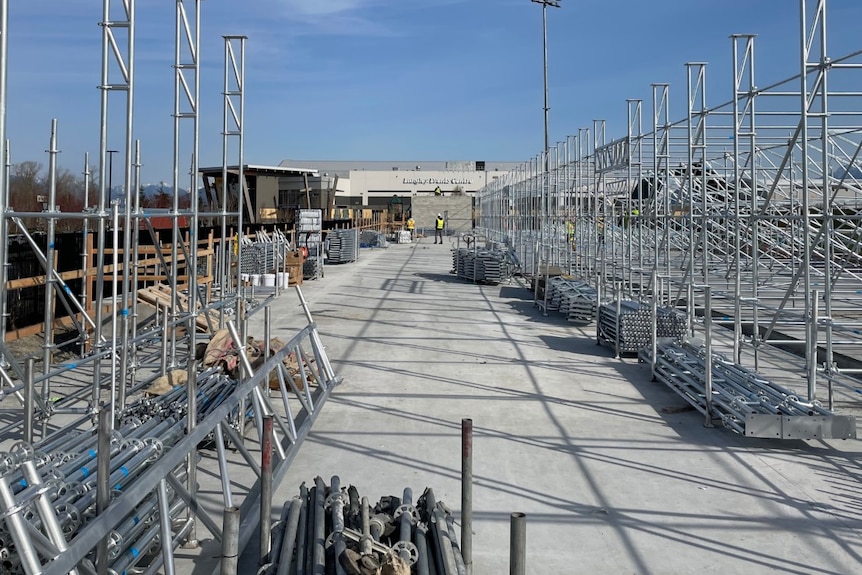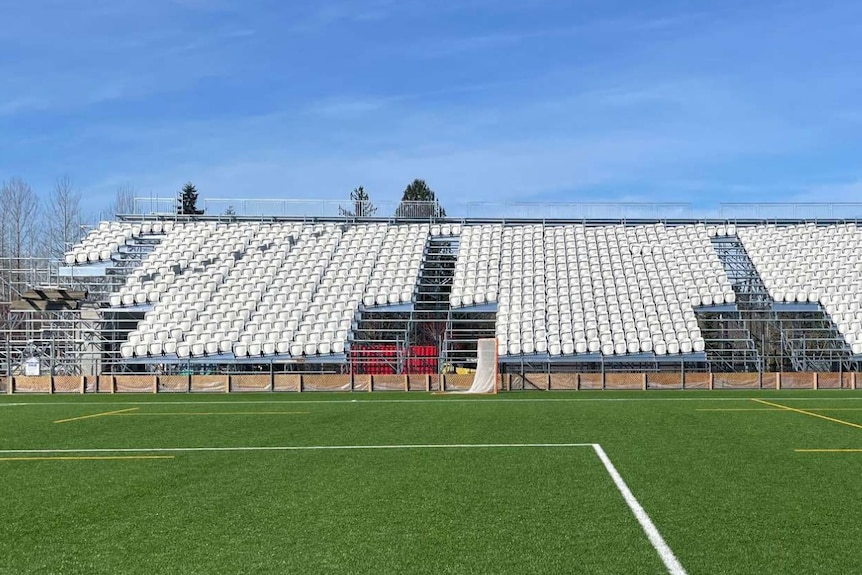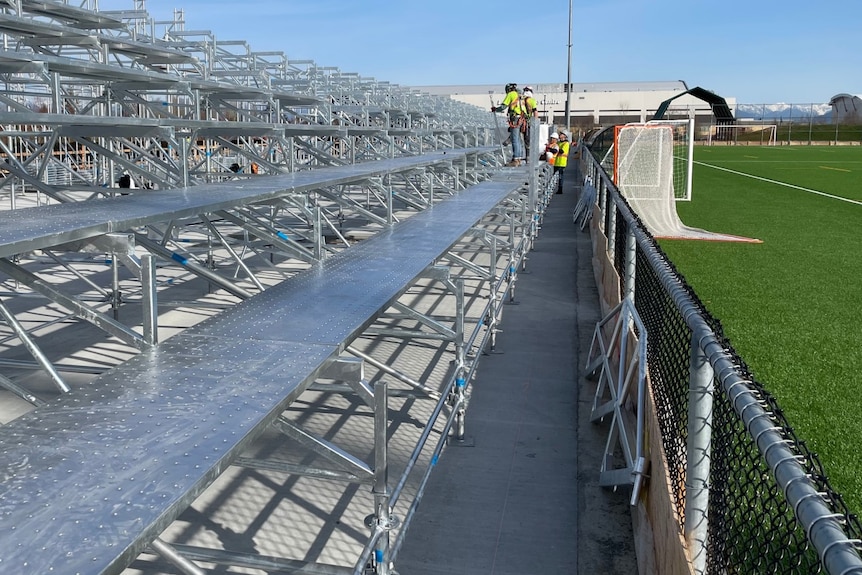Investing hundreds of millions, or sometimes even billions, of taxpayer dollars in elite sports stadiums can be a deeply controversial proposition.
From Brisbane’s decision to slash construction plans for the 2032 Olympics, to unrest over the new AFL stadium planned for Hobart and Victoria’s decision to abandon the 2026 Commonwealth Games, governments across the country have often opposed the idea of investing sums in sports infrastructure.
And for clubs or leagues looking to finance their own venues, the cost of building a traditional stadium can be prohibitive.
This is leading a growing number of cities and sports clubs around the world to explore a potentially much cheaper alternative: so-called “modular stadiums”.
Built in sections, modular stadiums use steel and other prefabricated elements that are faster to assemble and can cost less than concrete stands.
“The moment someone talks about stadiums, they think about crazy money,” Adam Torpey said.
Torpey is vice president of business development at Canadian investment firm SixFive Sports and Entertainment, one of the companies championing modular stadiums.
“(With modular stadiums) you don’t spend 400, 500, 600 million dollars on conventional concrete stadiums. The cost is drastically reduced,” he said.
Among the clubs hoping the modular construction technique can provide a more affordable but suitable home is young A-League club Western United.
“We’re not trying to build a 50,000-seat stadium,” Western United president Jason Sourasis said.
“We could start with a capacity of 10,000 and grow to 15, then grow to 20, then grow to 30, but we will grow as demands grow.”

Western United has established a base in Tarneit, which is 25 kilometers west of Melbourne’s CBD, and currently has a small 5,000-capacity stadium where it plays both men’s and women’s A-League matches.
The club plans to build a new stadium behind the current ground for the 2026/27 season and is examining modular options.
The initial budget is around $140 million and United, which will make a decision on the successful builder within weeks, sees prefabricated or modular options as a realistic way to minimize construction costs.
“There are different forms of that,” Sourasis said.
“There are things that use engineered wood, there are precast concrete.”

Criticism of the ‘Mecano Stadium’
While one of the main benefits of modular stadium design is cost (SixFive estimates it can build a fully enclosed rectangular stadium that seats 20,000 people for about $85 million), the method is not without its critics.
AFC Wimbledon, a club in English Football League Two, used a modular design for three stands at the new ground which opened in 2020.
But rival fans mock the unconventional design as the “Meccano Stadium” for an alleged resemblance to products made from toy construction kits.
However, the idea of building a modular stadium has attracted the attention of several A-League clubs.
Torpey said SixFive had held talks with five A-League clubs.
The issue is hot in Brisbane, where the Roar Supporter Federation has been campaigning to build a boutique stadium since the group was created in 2017.
“Over the last 20 years, the average attendance at a Roar game is about 11,000 people and in [Lang Park]”said federation vice president John Lang.
“It has 52,000 seats, it’s too big and the fan experience is not that good.”

While Roar chief executive Kaz Patafta said the club had more pressing priorities, including establishing a strong presence in the city centre, Lang is pushing for improvements to Perry Park, the club’s current home. the NPL, the Brisbane Strikers.
“We won’t grow unless we end up with a better product and the product right now is not good,” he said.
Many A-League clubhouses are also increasingly used for other events, such as rock concerts, causing significant damage to playing surfaces.
That can affect the quality of the games and become an additional disincentive for fans to attend.

The A-League’s governing body, the Australian Professional Leagues (APL), said refurbished stadiums were on its agenda and it had met with international parties looking to invest.
“New technologies, particularly modular stadiums, are a really interesting proposition and help reduce the cost barrier,” said an APL spokesperson.
“We have met with SixFive to understand the technology, its benefits and its suitability in the Australian market.
“This is something we will continue to explore with our clubs, stakeholders and government over the next year.”

